Portrait of a Street Musician
(Paris, March 22, 2009)
I asked an expert,
later, what instrument
this musician played.
“I’ve never seen the like,”
he shrugged. “I think
it must be homemade.”
Jet-lagged, I stood
in grey Paris
among the fruit stands.
I was holding unfamiliar
coins and my camera
in my hands
when I heard a faint
strain, a light air,
a thin ribbon of sound
that I followed,
to this spot, where
it wound and unwound.
I cannot recall
the names of the notes,
their order,
just that I lifted
my lens, questioning
across the border
between us. He
nodded, clenched his jaw.
The camera whirred—
a tiny percussive sound,
like a twig snapped by
the weight of a bird—
and, as my young
daughter danced
over, how sun burned
on those coins we
offered; how he
smiled in return.
Leslie Schultz
The idea for this poem came when I was looking this morning at a catalog for the Milwaulkee Art Institute. I opened the volume at random and read, under a reproduction of his Fauve painting titled “The Wheat Field” (circa 1906), of a French painter, Maurice Vlaminck, who “was a self-taught artist who began painting purely for pleasure, while supporting himself financially by playing the violin.” That sentence made me remember this moment eight years ago–the grey light and the grey stone of the French market on a Sunday in Paris. All these years later, and I hope his playing brings him joy as well as coins. When I look at the craftsmanship of his unnameable stringed instrument, I think it must.
LESLIE
Check out other participants at the NaPoWriMo Challenge 2017 home site!


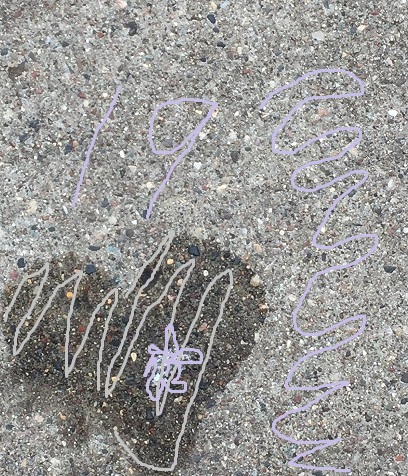
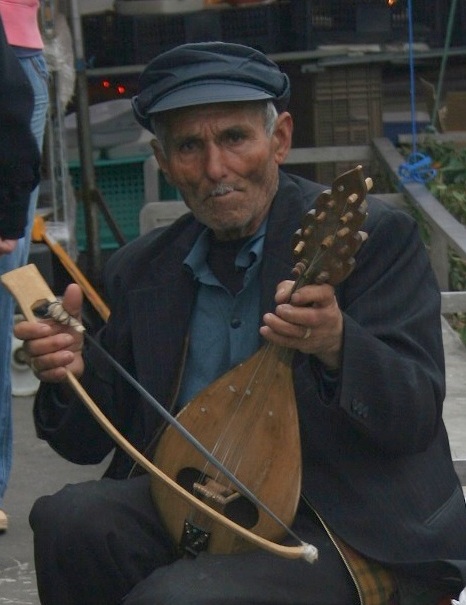
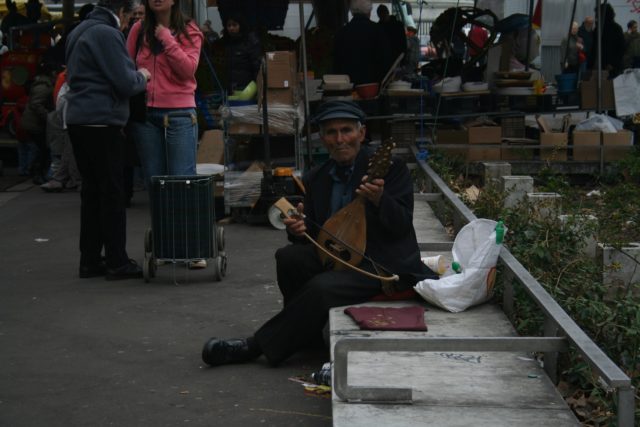
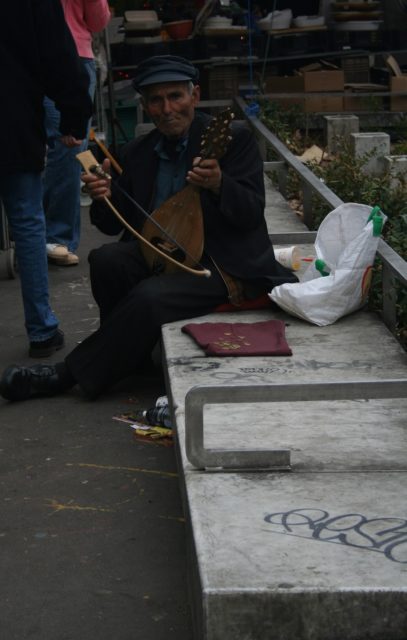
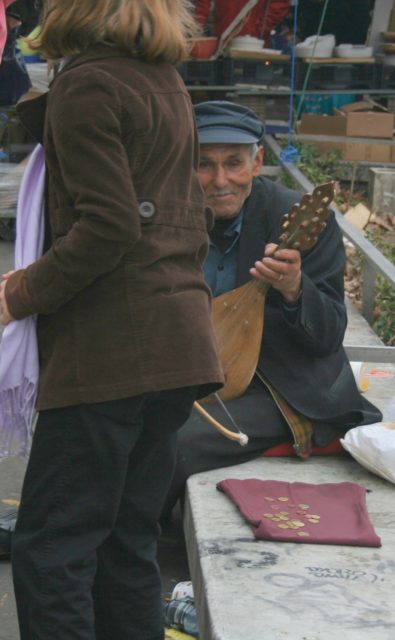
Manythanks, Kate, for clearing up years of wondering about this. I am grateful. And I am interested to see in the poem that some echoes of the labyrinth–a Cretan icon–crept in. As for the name, the symbol of poetry. well…I wonder if this background will give rise to a second poem one day.
Leslie
Hi Beth,
The poem is from this morning–one I am so happy to have written, and, as a consequence, to learn from a comment from another reader what the instrument is!
So evocative! Leslie
What delightful memories set to poetry, and a charming series of photos! The instrument is the lyra of the Greek islands, often called a Cretan lyra. The sound is reminiscent of the violin, but there are some quirky differences in playing. In regard to the left hand, the strings of the lyra are set very high above the fingerboard, and the tips of the fingers press against the fingerboard so that the face of the fingernail presses against the string to make various pitches. In most other string instruments, the tip of the finger presses the string down to the fingerboard to change the pitch. As to the right arm, which controls the bow, how one moves from one string to another is quite unexpected to those familiar with violin family instruments. When playing instruments such as the violin, one changes the angle of the bow to play on this string or one that one, i.e., the elbow goes up or down for the violin, and the arm goes away from or towards the body for cello. In playing the lyra and similar instruments, it is just the opposite. The bow remains on one plane and the player turns the lyra this way and that so that the desired string is under the bow, rather than moving the bow to the desired string.
Thank you, Leslie, for bringing back memories of long ago and my teacher, Bob Beer of the Eastern European Folklife Center, who introduced me to the Cretan and Pontic lyras and the Turkish saz.
You can imagine how much I enjoyed this poem. The photograph is truly a treasure. His face is wonderful. The poem is a joy – so precise and touched with everything from those rare connections with strangers to the simple pleasures of music, rewarding a performance and that human connection.
Don’t believe I ever heard this story or read this poem – a great treat!